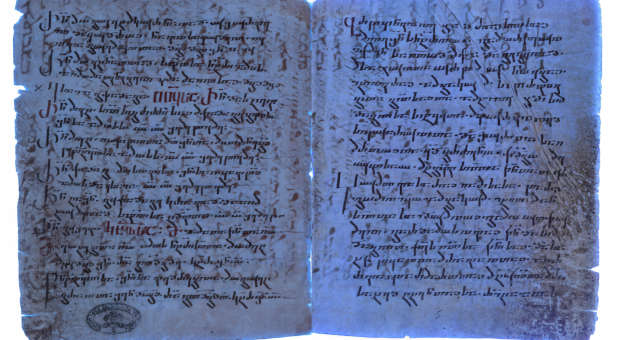The archeological community is in a frenzy now that a part of a long-lost manuscript has been found, revealing one of the earliest translations of the Gospels.
The manuscript in question was hidden beneath layers of additional text that had writing on top of it, and it took advanced UV light technology to reveal the ancient writings.
“The tradition of Syriac Christianity knows several translations of the Old and New Testaments,” says medievalist Grigory Kessel.
“Until recently, only two manuscripts were known to contain the Old Syriac translation of the Gospels.”
As reported by Popular Mechanics:
“The long-hidden chapter—an interpretation of Matthew chapter 12—was originally translated as part of what are known as the Old Syriac translations about 1,500 years ago. But thanks to the scarcity of parchment a couple of hundred years later in the region, that parchment was reused, mostly erasing the original translation of the biblical New Testament. A document like this, where one layer of text hides the erased remains of another, is called a palimpsest. The Kessel find is a double palimpsest because the parchment was then used a third time.”
Researchers are still hard at work completing the translation of the words in Matthew, but they released part of what they have currently transcribed from the Syriac texts:
“While the original Greek of Matthew chapter 12, verse 1 says, ‘At that time Jesus went through the grain fields on the Sabbath; and His disciples became hungry and began to pick the heads of grain and eat,’ the Syriac translation says, ‘[…] began to pick the heads of grain, rub them in their hands and eat them,'” the team shared in a statement.
As reported by the Science X networks Phys.org, “The Syriac translation was written at least a century before the oldest Greek manuscripts that have survived, including the Codex Sinaiticus. The earliest surviving manuscripts with this Syriac translation date from the 6th century and are preserved in the erased layers, so-called palimpsests, of newly written parchment leaves.
“As far as the dating of the Gospel book is concerned, there can be no doubt that it was produced no later than the sixth century,” the scientists wrote in their study.
“Despite a limited number of dated manuscripts from this period, comparison with dated Syriac manuscripts allows us to narrow down a possible timeframe to the first half of the sixth century,” they added.
Claudia Rapp, director of the Institute for Medieval Research at the OeAW (The German agency Österreichische Akademie der Wissenschaften), says in a press release:
“Grigory Kessel has made a great discovery thanks to his profound knowledge of old Syriac texts and script characteristics.
“This discovery proves how productive and important the interplay between modern digital technologies and basic research can be when dealing with medieval manuscripts,” Rapp added.
This astonishing find will continue to reveal amazing new information in the Syriac translation of the New Testament texts.{eoa}
 Bring Charisma magazine home with a subscription today!
Bring Charisma magazine home with a subscription today!
James Lasher is Staff Writer for Charisma Media.





